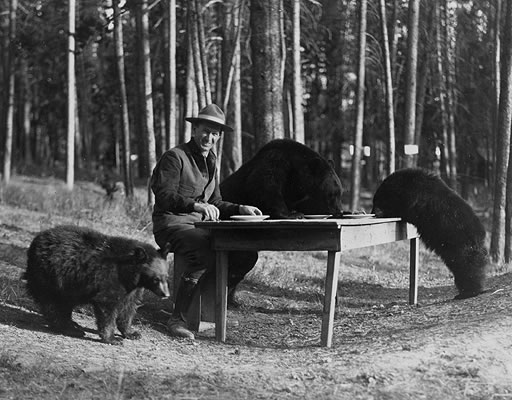
Horace Albright
Photo: pbs
We recently brought you and overview of the beauty that is Yellowstone National Park. It’s by far the most beautiful of all the National Parks in my opinion, mainly because of its diversity. Yellowstone also happens to be the first officially recognized National Park and if you’ve ever been you already know why.
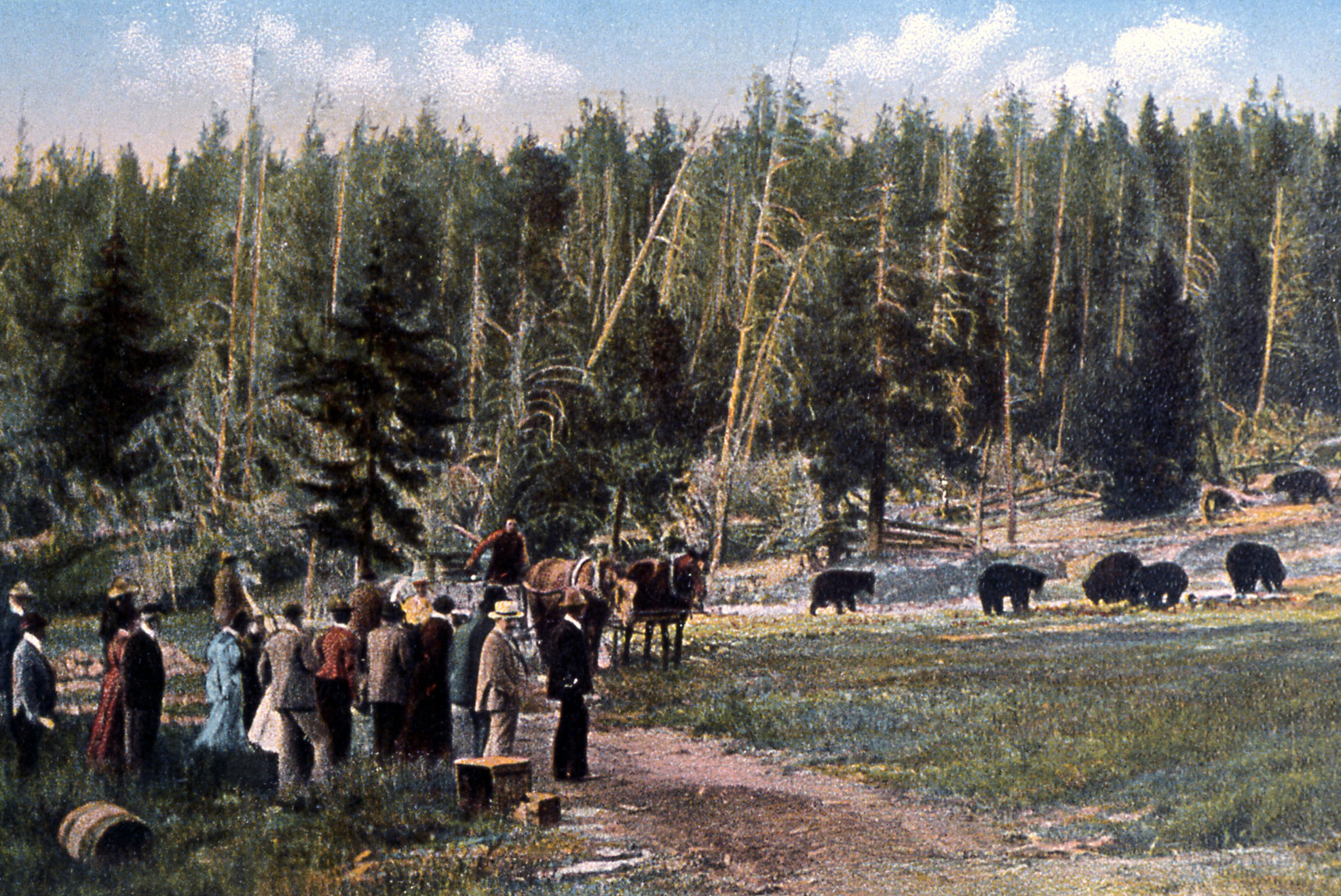
Postcard of the bear feedings
Photo: nps
But actually, that wasn’t always the case. At first, the public didn’t want to see that much land designated strictly for the use of recreation and pleasure. Especially because it was being paid for by tax dollars. So in order to attract more people bear feedings started to become extremely popular. The exact date these feedings started is unknown but there are records dating back to as early as 1909 when F. Dumont Smith visited the Yellowstone Lake Hotel. He wrote about how upset he was that he and his girlfriend didn’t get to ride in the “garbage cart” that would take old food scraps out to feed the bears.
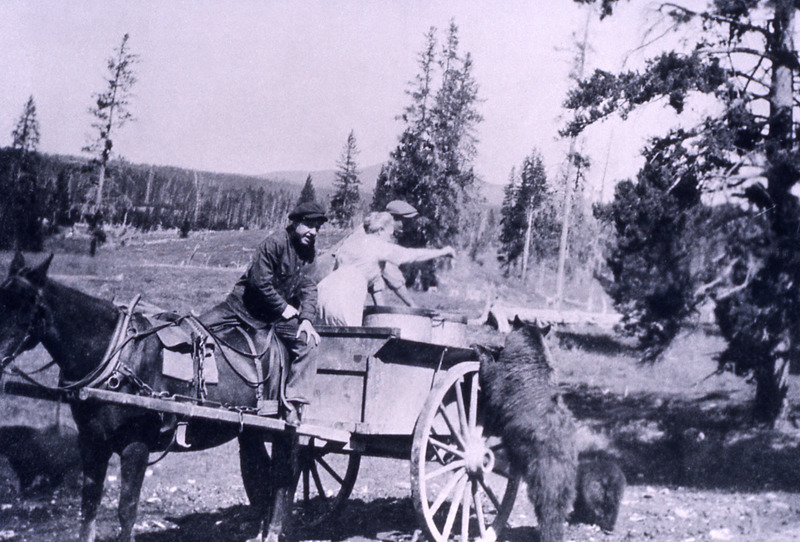
Photo: atlasobscura
The thought of riding in an old wooden cart with buckets full of food surrounded by a bunch of hungry bears doesn’t exactly sound like the safest thing to do, but I’m sure it was exhilarating as hell. There were multiple feeding platforms strategically placed all over Yellowstone, as well as a few other parks like Yosemite and Sequoia. They would even place them near hotels and advertised being able to see bears feeding and eat a meal in the hotel within an hour.
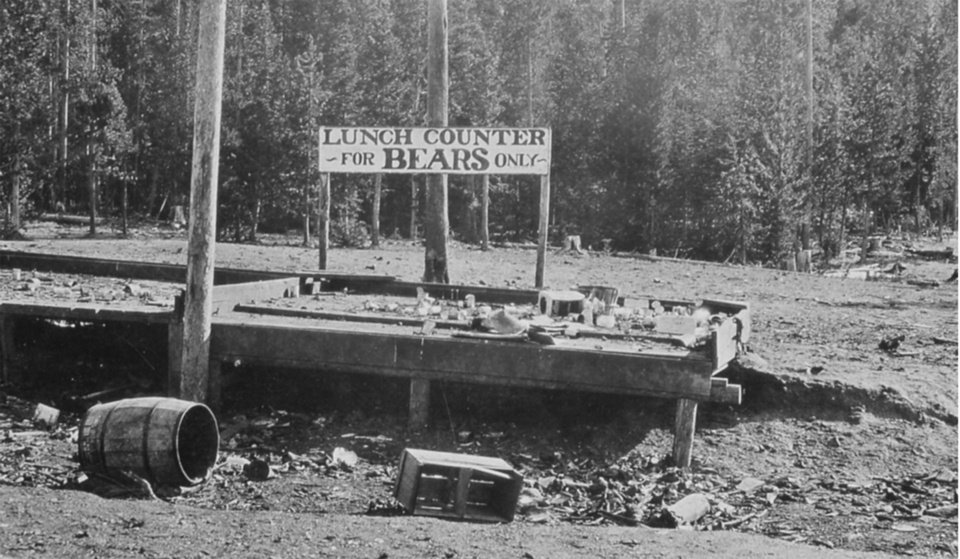
Photo: newsok
The most common name you will see when researching this topic is Horace Albright. He was the superintendent of Yellowstone starting in 1919 and he was was a huge fan of the bear feedings. When he took the position he made the human-animal interaction one of his top priorities. He felt he had “a duty to present wildlife as a spectacle” for the many tourists that attend the parks.
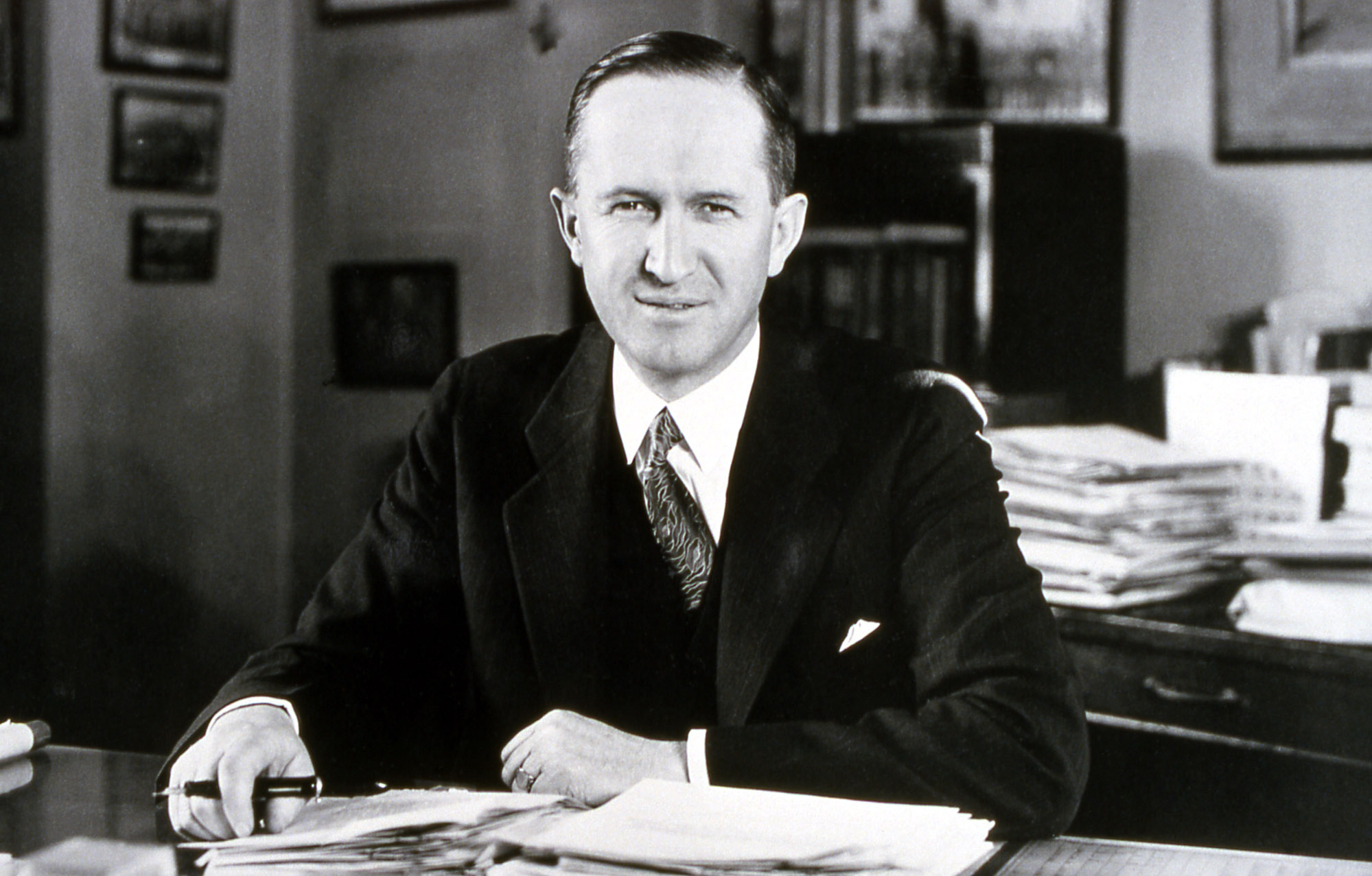
Horace Albright
Photo: nps
He even went as far as to open two zoo’s within the park so that people could get an up-close look at the many animals seen in the park. It was reported that he would set up buffalo corrals in summer where he would put 15 of the best bulls he could find to provide the perfect representation, plus maybe the occasional photo for those lucky enough to have a camera.
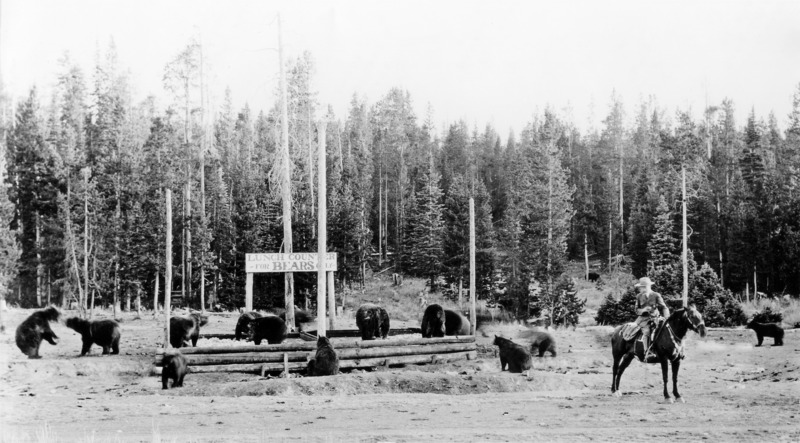
Photo: atlasobscura
Albright’s claim to fame, however, was his contributions to what became known as the “bear shows”. He is said to be the one that brought the bear feedings from a clever way to get rid of old trash and grab a few customers, to the full on attractions it would become. The feeding platform at the dump outside Old Faithful had a big sign above it saying “Lunch Counter For Bears” and there were wooden benches set up all around it with only a small safety ditch between onlookers and the hungry bears. Apparently, just after dinnertime park ranger, Philip Martindale, would mount his horse and back it up to where he was only 30 feet away from the bears and proceeded to teach about the bear’s biology among other things.
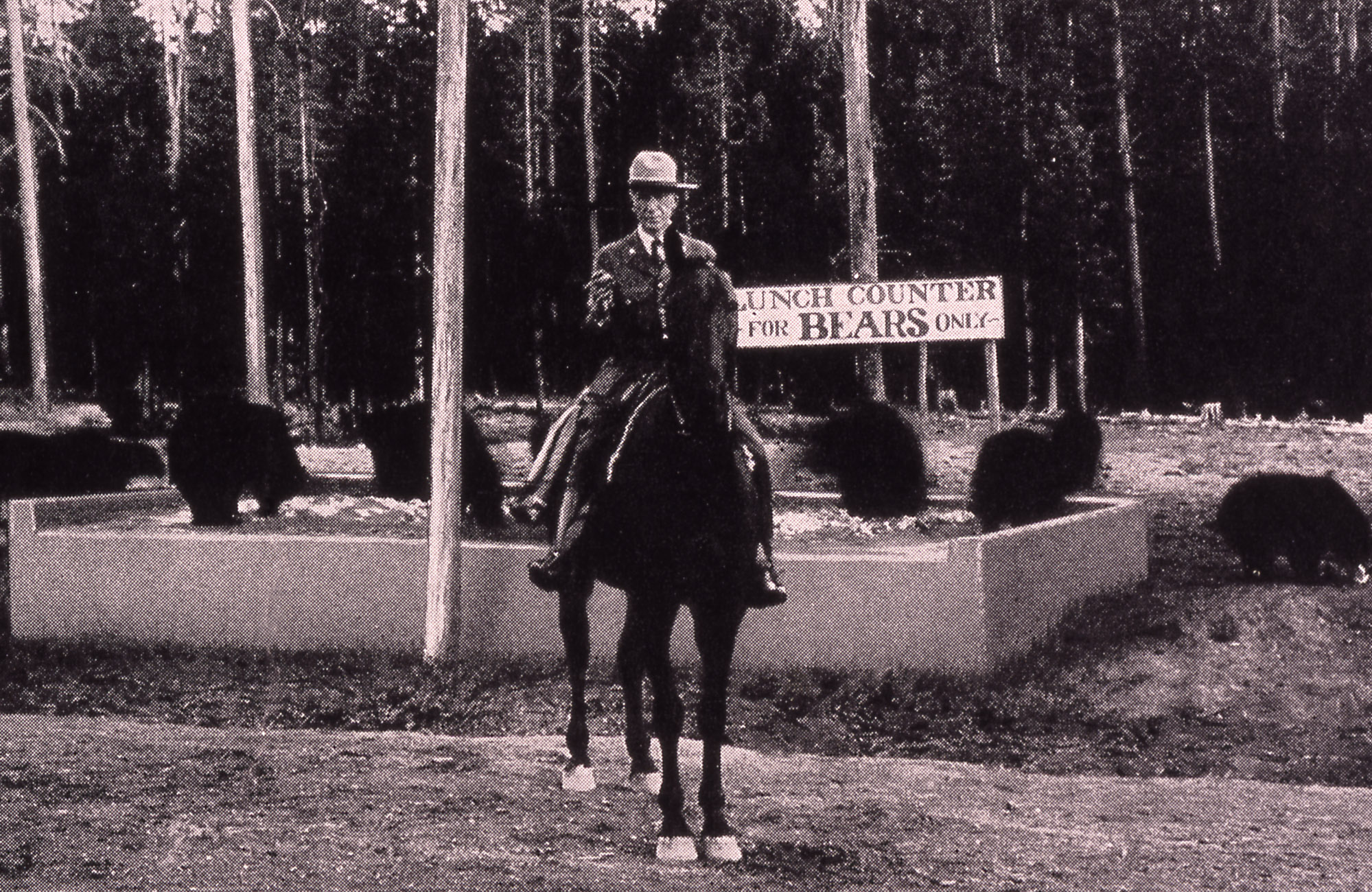
Photo: nps
The Canyon Hotel also had a feeding platform that was bigger than the one at Old Faithful. It had full log bleachers and a massive concrete platform where food was piled up to attract the stars of the show. Reports claim that at times there would be as many as 50-70 bears in a feeding frenzy, and not more than a stone’s throw away was a massive crowd of human beings!

Photo: theenchantedmanor
As you could imagine this also brought its own set of problems. When cars started to be allowed into the park the bears looked at them like big trash cans filled with dinner for weeks. These bears would earn the fitting nickname ” Hold-up Bears” because they would essentially hold up passing cars until they either fed them or worse. In 1927 President Calvin Coolidge and his family arranged a photo with Jesse James, the most famous “Hold-Up Bear” in the park.

President Coolidge with Jesse James
Photo: atlasobscura
There was at least one reported death which was one of the parks employees, Frank Welch. Many people got scratched, mauled and even bitten but even that didn’t phase Albright. He felt the scars would be a perfect souvenir to remember the park and that it was most likely caused by foolish behavior.
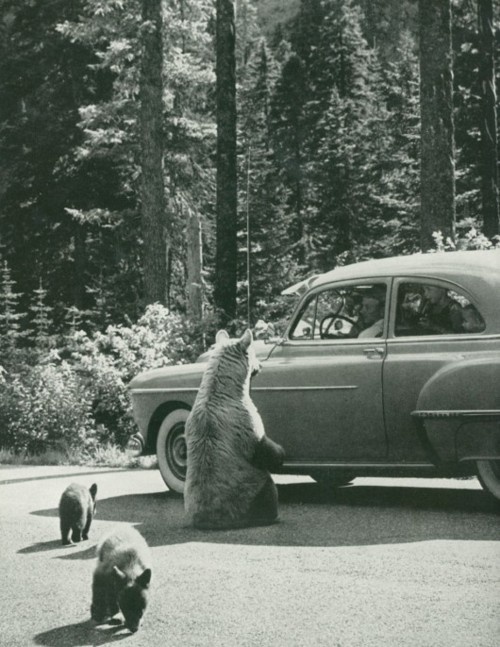
Photo: yellowstoneinsider
Unfortunately, if you wanted to jump in the car right now and head up to Yellowstone to watch these wild bear feedings it would be a waste of your time. While it’s possible you may see a bear, I saw a couple when I was there, the actual feedings are no more. Albright was promoted in 1929 to become the director of the entire National Park Service and that was the beginning of the end. His successors didn’t have the same passion for keeping the project open that he had. They soon began to phase out the man-made feedings after guidelines were put in place by park biologists that would require the animals to “carry on its struggle for existence unaided”.
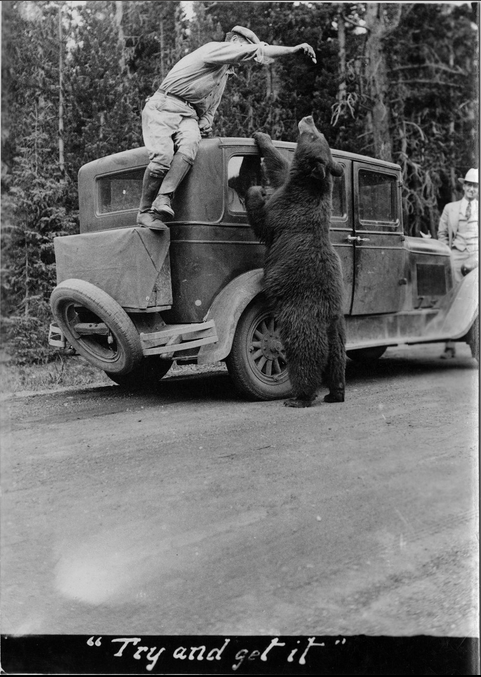
Photo: yellowstoneinsider
Even though Albright didn’t agree with the new guidelines but there wasn’t much he could do about it. Because at the time the park was short on attendants due to the oncoming World War II. Albright ended up getting the last word because he warned those in favor of the change that the guests and maybe, more importantly, the bears were going to be a lot harder to convince. It took decades for both the bears to stop “holding up” cars for any food they might have on hand, surprisingly it took just as long for visitors of the park to stop hanging sweets and other tasty treats out there window.

“Hold-Up Bears”
Photo postcarroundup

